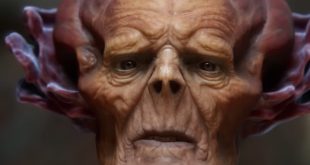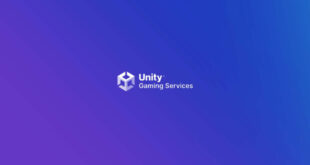If you’re hoping to make a splash with your debut game, it always helps to aim big.
That’s the opening gambit of Brainhold Games, a three-man studio based in Argentina. Its first title, Rex Odyssey, is described as a virtual love letter to classic platformers, as well as iconic animation from TV and film.
“Rex Odyssey is really influenced by our own childhood memories, and parts of our adult lives, too,” details art director Mauricio Dal Fabbro. “It’s based on our love of the new wave of cartoons like Adventure Time and Regular Show. We’re inspired by the emotional stories and powerful sights of the great Hayao Miyazaki and Studio Ghibli universe, too.”
To recreate the unforgettable experiences of their stimuli – without simply plagiarising them – Dal Fabbro and his team aimed to, as lead programmer Diego Sarmentero explains, “include those special moments, but from a new point of view”.
"Audio is not only about the difference in genre, but also about the overall mood of the game."
Martin Ayguavella
When it came to selecting the best engine to paint Rex Odyssey’s vibrant visuals, Brainhold went with software that reflected the approachable and welcoming nature of its game.
“We started with Unity 4 free,” recalls Sarmentero. “The documentation is great and the resources in the Asset Store let you try new ideas really quick but, mostly, the community of people developing their own games with this tool is something that is really helpful. All the forums and blogs dedicated to the tool and people sharing their knowledge and experience become invaluable, especially when you are an indie.”
Dal Fabbro adds his own experience of targeting a visual style comparable to the expressive hand-drawn art of Ghibli and Adventure Time.
“The workflow between my main 3D software and Unity makes creating and importing assets really quick,” he says. “You can make fast prototypes to test things, try a few simple scripts without bothering the programmer to see if it will work as intended and the final integration is almost effortless.
“There’s a lot of fine tweaks to do in order to achieve the final aesthetic of the level the way I pictured it in my head, but Unity – especially the Asset Store – gives you plenty of tools to make the whole process a little easier.”
Brainhold also wanted Rex Odyssey to sound as distinctive as it looks.
When it came to designing sound effects for the world, lead audio designer Martin Ayguavella was unable to rely on already established audio concepts.
“When making any type of game that needs realistic audio feedback you are bound to make sounds that represent real-world materials,” he details. “Whereas in a fantasy world like Rex I try to blend what you would expect to hear from a certain element with classic platformer sounds to get a mixture of both worlds. It’s not only about the difference in genre, but also about the overall mood of the game.
“I try to not use pre-recorded samples for my music and SFX. I make my own effects using modular synthesis software and hardware, plus lots of layering and tweaking.
“For the music, I make mockups on GarageBand and BeatMaker. Once it’s approved, I go to my DAW to go full production, then to Fmod Studio in order to create non-linear soundscapes and music that adapts to the narrative.”
All of this, Ayguavella says, contributes to Rex Odyssey’s ability to absorb its influences but produce something fresh: “Every time you play you’ll get a different sonic and visual experience.”

 MCV/DEVELOP News, events, research and jobs from the games industry
MCV/DEVELOP News, events, research and jobs from the games industry



